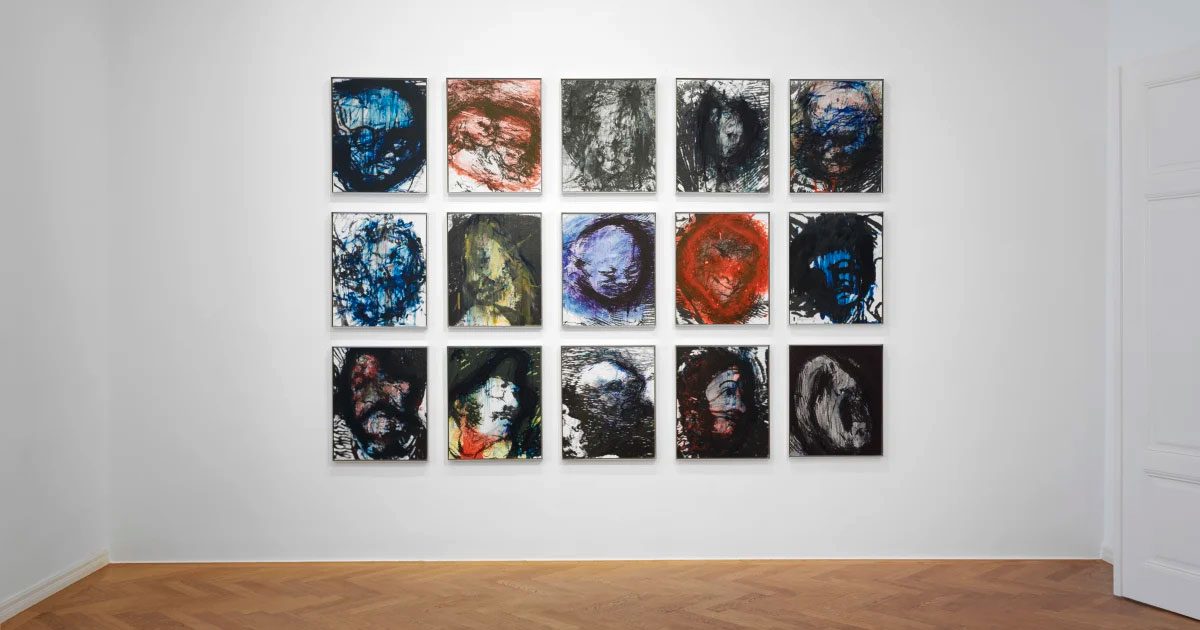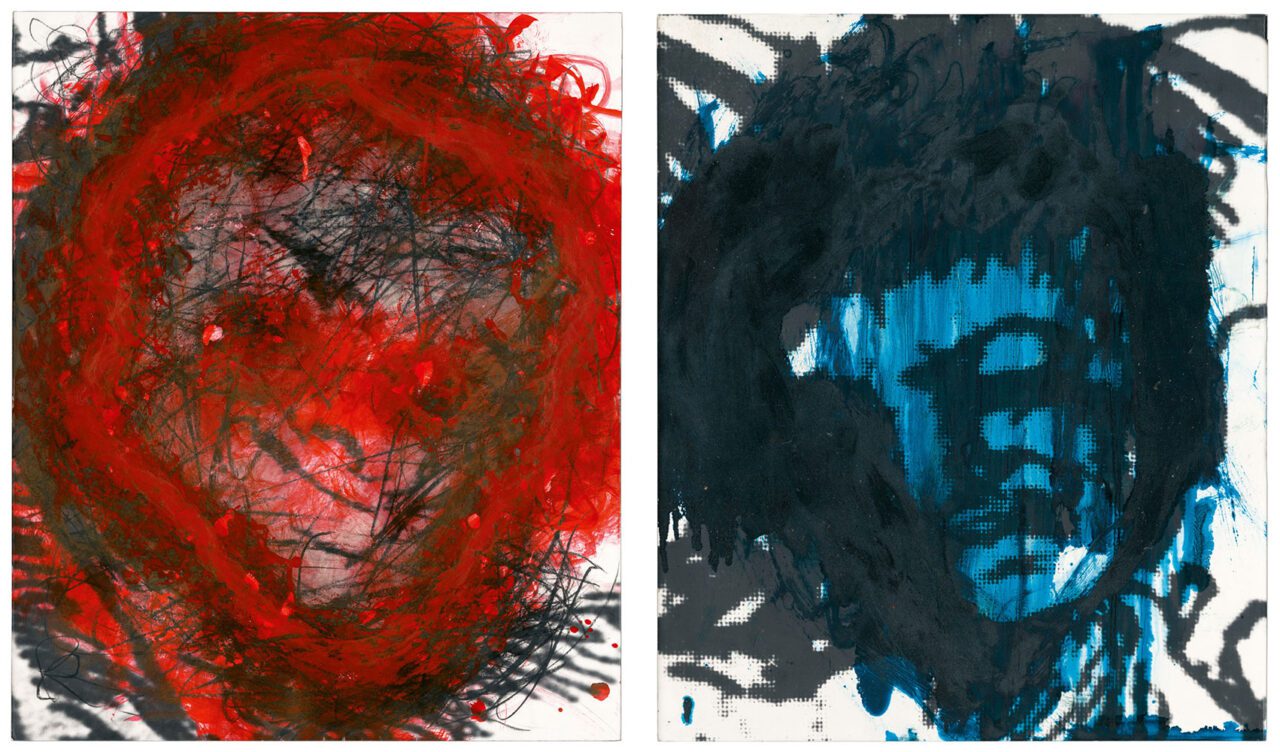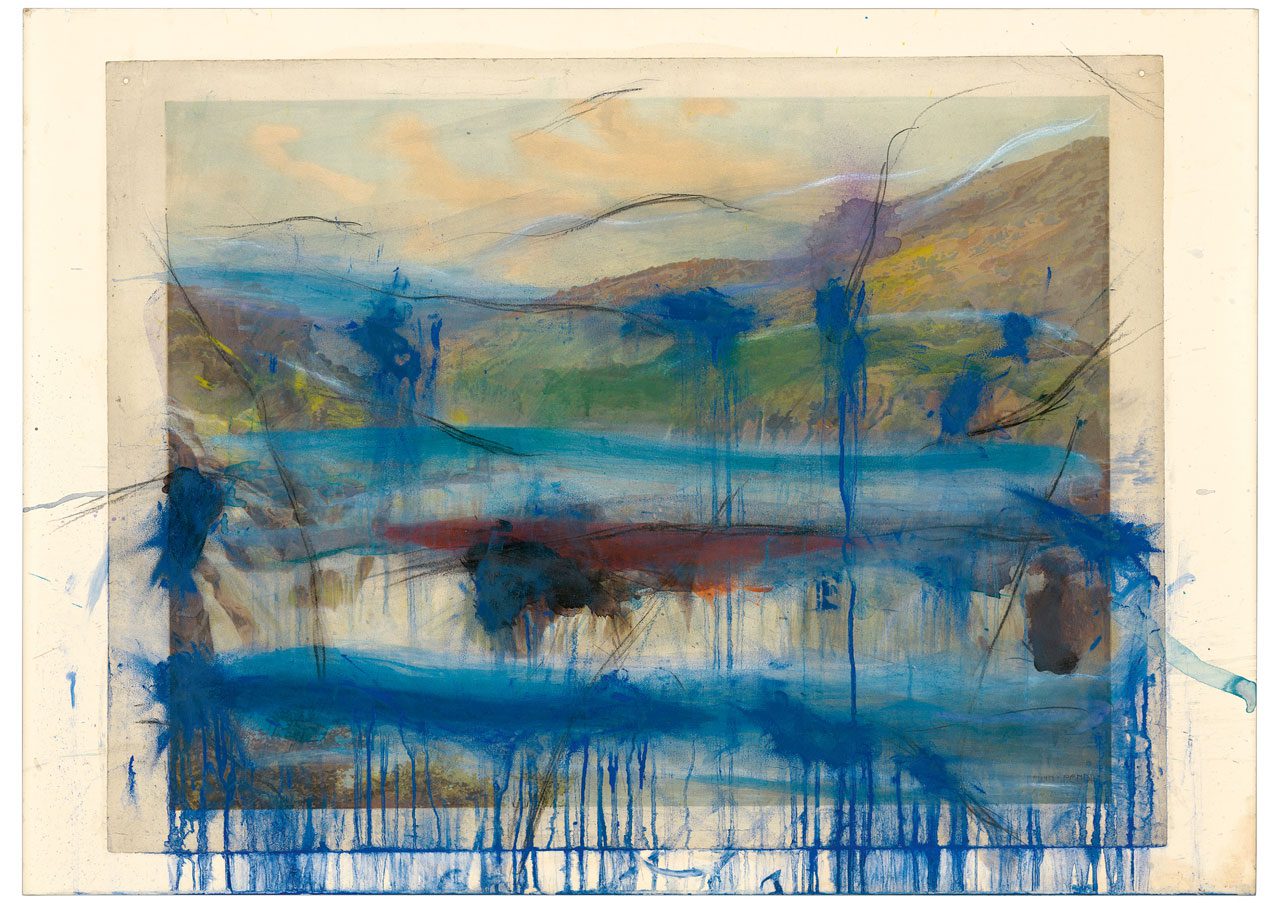PRESENTATION: Arnulf Rainer, Landschaften—Goya (1983—1992)
Born in 1929 in Baden, near Vienna, Austrian artist Arnulf Rainer was a nonconformist from the beginning: he dropped out of art school twice after only a few days, preferring instead to follow his intuition. Today he is regarded as a pioneer of Art Informel, a movement which brought an intuitive form of lyrical expression into the field of abstraction. One of his early influences was Surrealism, and an ongoing interest in dreams and the subconscious imparts a mystical element to his work.
By Efi Michalarou
Photo: Thaddaeus Ropac Gallery Archive
The exhibition “Landschaften—Goya (1983—1992)” brings together two of Arnulf Rainer’s celebrated series on the occasion of the artist’s 95th birthday: the “Goya” paintings and “Landscapes”, both created between 1983 and 1992. In his uncompromising search for new means of expression, Rainer developed radical approaches to art, establishing him as one of the most influential artists of the post-war period. In the “Goya” series, Arnulf Rainer pays tribute to Francisco de Goya, whose art – deeply attuned to the complexities of his time – explored dark, surreal themes that foreshadowed modern existentialism and abstract art. Rainer probes the paintings of the Spanish master by reinterpreting them through expressive overpainting, and the finished works oscillate between homage and radical transformation. Some works in this series feature discernible faces, while others show semi-abstract oval structures, only faintly reminiscent of heads – or tunnels and archways. An azure-blue and reddish-pink tonality runs through the series, lending the depictions a surreal quality, overlaid with deep-black gestural brushstrokes. Based on photographic enlargements of Goya’s portraits, Rainer’s intense, expressive depictions adopt the stark contrast and raw quality of expressionist woodcuts. By enlarging Goya’s imagery to such a degree that the photo fragments into benday dots, Rainer draws a connection to postmodern movements such as Pop art. Heads and faces have been recurring motifs in Rainer’s work throughout his career. At first, the artist documented his own grimaces and other exaggerated facial expressions, drawing on dormant or manic reserves of energy to express the tensions of inner states. He has noted that facial expressions and body postures predate the spoken word as forms of human communication, and he considers them more complex and meaningful than language. In the late 1960s, he frequently took photo-strip portraits during nightly sessions in the automated photo booth at the Westbahnhof train station in Vienna. During an experiment with mescaline, a psychedelic, he perceived spots of colour appearing on these portraits and, acting upon this impulse, began overdrawing the photographs, initiating his famous “Farces” series (1970–73). In the subsequent decades, Rainer turned to portraits by other artists, including works by Vincent van Gogh and Rembrandt. Through the process of overdrawing, he emphasises the expressive moments captured in the artworks of his predecessors, and these graphic or colourful adaptations either correspond to the mood of the underlying image or contradict it. Rainer’s “Landscapes” combine depictions of nature with his characteristic gestural overpainting. The works express his exploration of nature as a means to convey internal conditions, while fluctuating between abstraction and figuration. This series characterised Rainer’s very beginnings as an artist. While still at school, he painted cartographic landscapes inspired by aerial photographs, including bomb craters, fires, tanks and aeroplanes in drawing lessons, avoiding figures and faces. In 1945, he fled from Russian occupation in Lower Austria to relatives in Carinthia, where he painted a series of uninhabited landscapes over the next few years, a period that marked his decision to become an artist. In contrast to his earlier overpainting, nature takes centre stage as an autonomous motif in this semi-abstract, intensely colorful “Landscapes” series. Illustrations from 18th and 19th century books, which Rainer began collecting in 1985, serve as the substrata of these works. The idyllic sceneries shine through multilayered applications of paint – sometimes diluted, dripping and fluid, sometimes in dense, opaque individual strokes. Elements, such as hills, trees or streams, remain recognisable but are fragmented and placed in new contexts through the overpainting and gestural interventions.
Photo: Arnulf Rainer, Ohne Titel, ca. 1989, Mixed media on chromolithography on cardboard on wood. 76.5 x 105.5 cm (30.12 x 41.54 in). © Arnulf Rainer, Courtesy the artist and
Info: Thaddaeus Ropac Gallery, Villa Kast, Mirabellplatz 2, Salzburg, Austria, Duration: 25/1-5/4/2025, Days & Hours: Mon-Sat 10:00-18:00, https://ropac.net/


Right: Arnulf Rainer, Serie Goya, 1983. Mixed media on photo on wood. 62.5 x 52.5 cm (24.61 x 20.67 in).© Arnulf Rainer, Courtesy the artist and Thaddaeus Ropac Gallery


